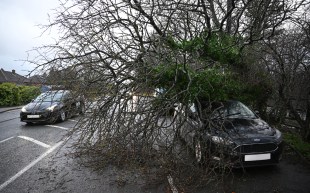Guide to the new MOT test changes, including tougher diesel emissions limits
Read this guide before taking your car to the garage
A NEW MOT test that comes into force in England, Scotland and Wales this Sunday, May 20, 2018, includes rule changes that will make it much harder for diesels to pass.
The rules are being introduced as part of a European Union directive that clamps down on dirty emissions and they’re seen as the biggest shakeup of MOTs for 20 years.
The changes are wider in scope, though, and affect all cars, vans, motorcycles and other light passenger vehicles, unless they’re over 40 years old and have not been substantially changed in the previous 30 years.
Diesel test changes
Tougher emissions limits
From May 20, there will be stricter limits on diesel emissions.
The emissions limits are determined by the car’s ‘plate value’ — an emission limit specified by the vehicle manufacturer — but there are some default limits for new cars, in case a plate value can’t be found:
| Vehicle first used | Type | Limit |
| Before July 2008 | Non-turbo | Plate value if present, or 2.5m-1 if lower |
| Turbo | Plate value if present, or 3.0m-1 if lower | |
| On or after 1 July 2008 | All diesels | Plate value if present, or 1.5m-1 |
| On or after 1 January 2014 | All diesels | Plate value if present, or 0.7m-1 |
DPF removal
Diesel particulate filters (DPFs) will be carefully checked for evidence of removal or tampering. Removing DPFs can increase fuel economy but doing so is illegal because harmful particulate matter is not trapped in the exhaust pipe and is instead pumped straight out into the air.
Removal of the DPF results in an immediate fail.
Owners who have deliberately removed particulate filters to improve the car’s performance face a bill of £1,000 or more, or having to scrap the car. Older diesels made before DPFs were built-in will not face the new emissions test.
Smoke from the exhaust
In addition, testers will check for smoke of any colour coming from the exhaust, and all MoT testers are required to use new diesel smoke meters that conform with the tougher standards.
AdBlue
There will also be new checks on AdBlue, or diesel exhaust fluid (DEF), systems, which turn harmful nitrogen oxide gases into harmless into harmless nitrogen and water.
Defect categories
The new MOT categorises defects as either dangerous, major or minor. Any dangerous or major defects result in an automatic MoT fail. Minor defects will result in a pass but will need to be repaired as soon as possible.
There will also be the usual “advisories” for any less significant problem that needs to be monitored and repaired at a later date, if necessary, such as if the tyre tread depth is close to the legal limit.
| Item result | What it means about the item | How it affects the MOT result |
| Dangerous | A direct and immediate risk to road safety or has a serious impact on the environment. | Fail |
| Do not drive the vehicle until it’s been repaired. | ||
| Major | It may affect the vehicle’s safety, put other road users at risk or have an impact on the environment. | Fail |
| Repair it immediately. | ||
| Minor | No significant effect on the safety of the vehicle or impact on the environment. | Pass |
| Repair as soon as possible. | ||
| Advisory | It could become more serious in the future. | Pass |
| Monitor and repair it if necessary. | ||
| Pass | It meets the minimum legal standard. | Pass |
| Make sure it continues to meet the standard. |
An example of the difference between a major and a minor defect could be if a car’s power steering fluid reservoir is below the minimum mark (minor) or empty (major).
A dangerous defect might be if a section of the power steering pipe, hose or wiring is damaged or corroded, causing the steering to be adversely affected.
New items being tested
You might be surprised to learn that brake pads haven’t been checked as part of the MOT… until now.
These are the items that will now be looked for, in addition to the checks from the old test:
- Obviously underinflated tyres
- Contaminated brake fluid
- Fluid leaks posing an environmental risk
- Brake pad warning lights and missing brake pads or discs
- Reversing lights on vehicles first used from September 1, 2009
- Headlight washers (if present) on vehicles first used from September 1, 2009
- Daytime running lights on vehicles first used from March 1, 2018 — though this won’t be relevant until 2021
Historic vehicles excluded
Prior to May 20, 2018, only vehicles first built before 1960 were exempt from needing an MOT.
The rules changes will mean that vehicles over 40 years old that have not been substantially changed in the previous 30 years won’t need an MOT from the 40th anniversary of when they were registered.
Drivers won’t have to apply to stop getting an MOT for their vehicle.
However, each time they tax their historic vehicle (even if they don’t pay a fee), drivers will have to declare it meets the rules for not needing an MOT.
Drivers must still keep their vehicle in a roadworthy condition. They can be fined up to £2,500 and get three penalty points for using a vehicle in a dangerous condition.





